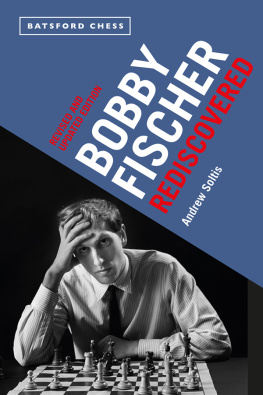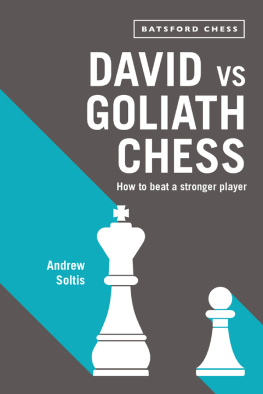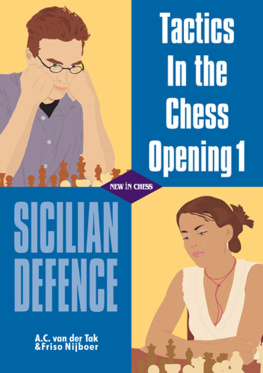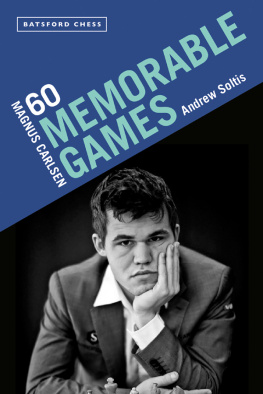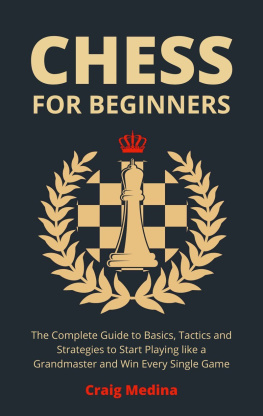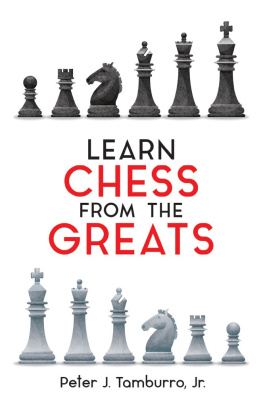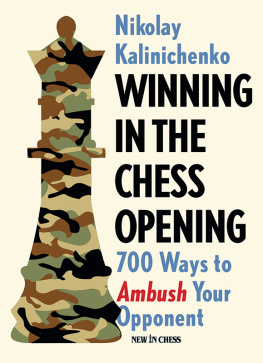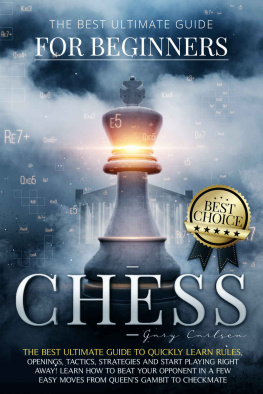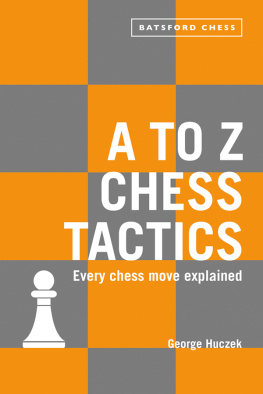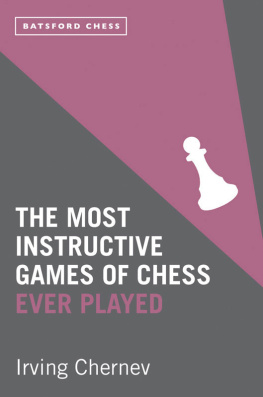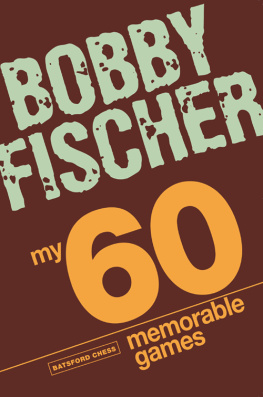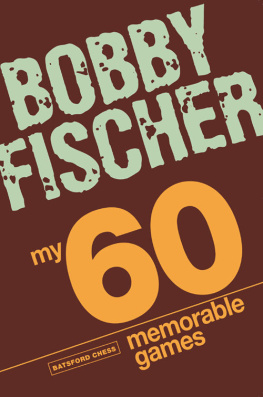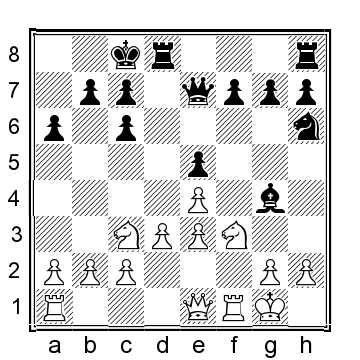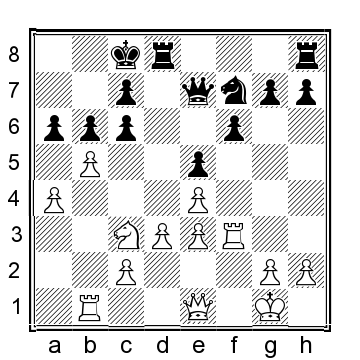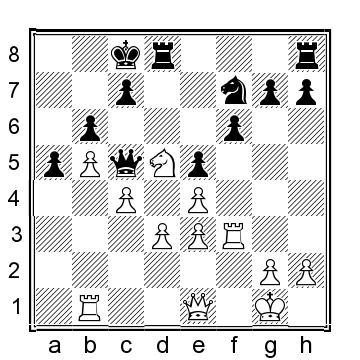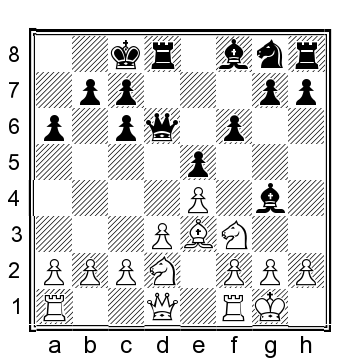Part Three
STRATEGY
The deep and final meaning of the term strategy is the most difficult to explain. I remember that sometime around the age of 14 I dedicated many hours of meditation to understanding what it is all about before having a fortunate moment of sudden revelation, hard to describe in words. In brief, I understood that one should not try to explain what strategy means; it is more important to add a bit of knowledge day by day.
This is the philosophy behind Part three, too. Far from being a comprehensive course on strategy, it explains the main aspects of certain themes, without much connection to each other.
The section starts with two chapters dedicated to somewhat paradoxical chapters about double pawns. In the first the main idea is to reveal their weakness by exchanging the more advanced of them, with little chance for the opponent to react. The second one is a warning about the fact that double pawns can also have their strength besides the obvious weakness.
Removing the outpost was inspired by a concrete revelation during the Baguio 1978 World championship match. At that stage, I found this to be one of the deepest things I had ever learned by simply analyzing the titanic Karpov - Korchnoi battle.
The central majoritys attack focuses on one of the most important aspects of the strategic battle. We cannot think of strategy without mentioning the pawn structure and the pawn majority is one of the most typical types of structural advantage.
Not all sacrifices are related to tactics. In the examples from the chapter The positional queen sacrifice the focus is on the strategic evaluation before and after this spectacular (but not necessarily tactical) operation.
Initially thought as a celebration of the 50 year jubilee, the chapter Squeezing water out of dry stone examines one of the main qualities of the great champions, making them first among equals.
Chapter One
EXCHANGING THE DOUBLE PAWNS
The evaluation of the weakness or strength of the double pawns has been controversial for at least a century. Although such pawns basically are a structural deffect, World Champions and other great players have revealed, either in their comments or their games, different facets of this issue.
Bronstein used to say half-jokingly that double pawns would offer him additional open files for the rooks.
Botvinnik treasured the compact area of squares covered by the double pawns and played quite a few instructive games illustrating his views.
The following game was played ten years before Bronsteins birth and about nine years before Botvinnik learned to play chess. Remarkably, it features both aspects exposed above and reveals an additional and somewhat unexpected one.

Michael Cheval - New rules of the old game
C 68
Jos Ral Capablanca Dawid Janowski
Saint Petersburg preliminary 1914
1.e4 e5 2. N f3 N c6 3. B b5 a6 4. B c6 dc6 5. N c3 B c5 6.d3 B g4 7. B e3 B e3 8.fe3 Q e7 9.0-0 0-0-0 10. Q e1 N h6
Both sides have double pawns, but this does not seem to be a strategic problem in either case. White has a strong control in the centre and can display some activity along the f-file.
Blacks pawns offer a reliable defence to the king and restrict the c3-knight by defending several important squares. On top, the latent pressure along the half open d-file prevents a white expansion in the centre. The deep purpose behind the next move of the future World Champion must have remained a mystery for his opponent until it became too late.
11. R b1!!
Janowski, an attacking player by excellence, must have taken this as the start of an easy to parry attack.
11...f6
Had he read Capablancas mind, he might have considered 11... R hf8 12.b4 f5 The abstract idea is similar to that of 15. b5 to exchange one of the strong double pawns, in order to gain space and the control over certain squares.
However, this method was fated to become famous a few moves later...
12.b4 N f7 13.a4 B f3
Probably fearing N h4-f5
14. R f3 b6
Keeping the attack under control. Vasily N. Panov recommends 14...b5 , but this would weaken the c5-square chronically and could be met with 15. N e2 followed by N c1-b3
15.b5
One hidden aspect of the weakness of the double pawns is fully revealed now. They are vulnerable in the way that in case of exchanges there is no colleague available to replace them, which results in giving up the control over important squares, such as d5 in our case.
This kind of vulnerability will be the main subject of the present article. Instead of blocking or trying to win them, the player facing double pawns would provoke their exchange!
15...cb5 16.ab5 a5 17. N d5 Q c5 18.c4
Whites attack has been frozen, but strategically Black is lost. After Capablancas last consolidating move, Black cannot even free his position with an exchange sacrifice on d5. The rest is relatively simple.
18... N g5 19. R f2 N e6 20. Q c3 R d7 21. R d1 K b7 22.d4 Q d6 23. R c2 ed4 24.ed4 N f4 25.c5 N d5 26.ed5 Q d5 27.c6 K b8 28.cd7 Q d7 29.d5 R e8 30.d6 cd6 31. Q c6 1 : 0
Curiously, there are very few similar examples available in the Exchange Ruy Lpez. The most remarkable I remember was played 60 years later.

C. Beerns (19th Century) - A difficult move
C 68
Henrique Mecking 2615 Viktor Korchnoi 2670
Augusta (m/12) 1974 [17/291]
This was one of Korchnois most difficult Candidates matches. Despite his relative lack of experience, the gifted Brazilian put strategic pressure on his mighty opponent all over the match. However, he only managed to win one game: this one.
1.e4 e5 2. N f3 N c6 3. B b5 a6 4. B c6 dc6 5.0-0 Q d6 6.d3 f6 7. B e3 B g4 8. N bd2 0-0-0
Meckings next move suggest that he knew tha classics quite well.
9. R b1!! N e7 10.b4 g5
Since White has not weakened his kingside structure in any way, this attack is ineffective, but what else can Black do?
11.a4 N g6
Black refrains from Janowskis solution: 11...b6 12.b5! (The strategically tempting 12.a5 b5 13. N b3 , yielding White the absolute control over the c5-square, would offer Black counterplay after 13... N g6 and if 14.h3 B e6 threatening both ... g4 and ... B b3, which would eliminate the dangerous knight.) 12...cb5 13.ab5 a5 Enjoying a large advance in development, White can start an attack immediately: 14.c4 Q d3 15.c5
12.b5! cb5 13.ab5 ab5 14. R b5
The first wave of attack has ended up in a success. White has opened queenside files for his attack, and his structure remains more flexible (one big island of pawns against tow Blacks).
Next page

